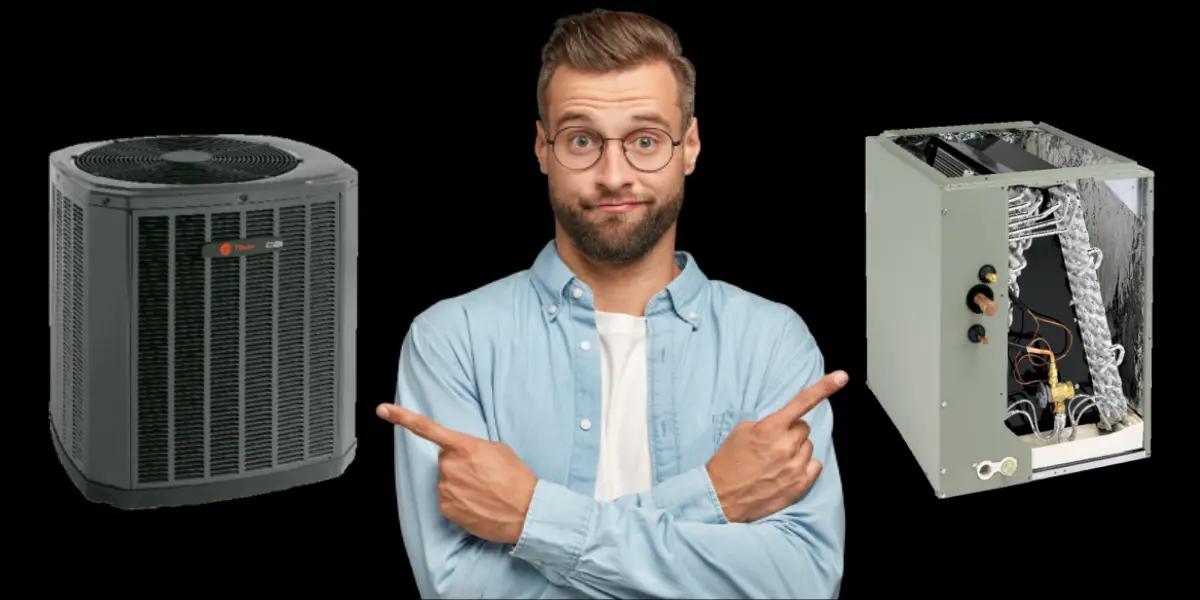A Deep Dive Into Your AC's Indoor Evaporator Coil
When you think about air conditioning, your mind likely first goes to the large outdoor unit that hums away on hot summer days, tirelessly working to keep your home cool and comfortable. But did you know that your air conditioning system actually has two major parts, and one of them resides inconspicuously inside your home? You might not realize it, but the indoor evaporator coil is just as important to the efficient functioning of your AC system as its more noticeable outdoor counterpart.
Let's dive deep into the workings of your air conditioning system., focusing particularly on the often overlooked yet essential indoor evaporator coil, its function, and common issues that arise, such as refrigerant leaks. By understanding these components and their roles better, you can ensure your AC system operates at peak performance, saving you both discomfort and money down the line.
The Dual Components of Your Air Conditioning System: An Overview
To fully understand the vital role the indoor evaporator coil plays, we first need to give a brief overview of how your air conditioning system works. Most residential air conditioning systems are what's known as split systems, composed of two primary parts:
The outdoor unit or the condenser. This is the part most of us are familiar with, and it's typically located on the side or back of the house. This unit is responsible for dispersing heat collected from the air inside your home to the outside environment. The indoor unit, which houses the evaporator coil. This component is often tucked away in a closet, attic, or basement and is a less recognized but equally important part of your AC system. It's responsible for absorbing heat and humidity from the air in your home.
These two parts work in tandem to cool your home. The outdoor unit expels heat, while the indoor evaporator coil absorbs it. If either part is malfunctioning, it throws off this delicate balance and hampers your system's ability to provide cool, comfortable air.
The Indoor Evaporator Coil: Function and Importance
The evaporator coil is where the real magic happens. But before we go further, let's clarify what an evaporator coil is. In its simplest definition, the evaporator coil is a series of pipes, usually made of copper or aluminum, filled with refrigerant. This coil is responsible for converting refrigerant from a liquid state into a gas, a process that absorbs heat.
When your thermostat signals that the indoor temperature is higher than your set level, your AC system springs into action. The indoor unit's fan draws warm air from your home and blows it over the cold evaporator coil. As the refrigerant in the coil evaporates, it absorbs heat from the air, effectively cooling it before it is redistributed back into your home. At the same time, humidity condenses on the coil, reducing the moisture level in your home and adding to your comfort.
The Troublesome Issue of Refrigerant Leaks
While your AC system might sound simple on paper, it's a complex piece of machinery, and things can go wrong. One of the most common issues is a refrigerant leak, which often occurs in the indoor evaporator coil.
The refrigerant is the lifeblood of your AC system. It's the substance that circulates through the evaporator and condenser coils, carrying heat away from your home. If a leak occurs, your AC system will gradually lose its ability to cool your home, leading to discomfort and possibly higher energy bills.
So, why do leaks commonly occur in the evaporator coil? The primary reason lies in the nature of the coil's function. The constant flux between high and low pressure, along with the coil's exposure to humid air and condensation, can cause wear and tear over time. This wear can lead to tiny holes or cracks, from which refrigerant can escape.
To Fix or Not to Fix: Replacing a Leaky Evaporator Coil
Upon discovering a refrigerant leak, many homeowners wonder if they can simply patch it up. Unfortunately, this isn't usually feasible for leaks in the evaporator coil. Due to the coil's complex design and the difficulty in reaching and effectively sealing leaks, it's often more practical - and sometimes, even more cost-effective - to replace the coil entirely.
A professional HVAC technician can perform a leak test to locate the problem. If a leak is confirmed in the evaporator coil, they'll likely recommend a coil replacement. While the upfront cost might seem daunting, replacing a faulty coil can save you money in the long run. An air conditioner with a refrigerant leak will consume more energy, leading to higher utility bills, and the constant refilling of refrigerant is not a sustainable or economical solution.
In conclusion, understanding the twin components of your air conditioning system, especially the often overlooked indoor evaporator coil, is crucial for maintaining your home's comfort. When faced with common issues like refrigerant leaks, it's essential to know when a fix is viable or when a replacement is the more prudent option.
At SS&B Heating & Cooling in Springfield, MO, we are dedicated to helping you navigate these complexities with ease. Our team of professional technicians is always ready to assist with thorough inspections, informed advice, efficient repair services, and quality replacements when needed. Our commitment is to ensure your air conditioning system operates at its best, so you can enjoy a cool and comfortable home, regardless of the season. Remember, your comfort is our priority.
Trust SS&B Heating & Cooling for exceptional air conditioning services in Springfield, MO. Upholding our motto, "SSB MEANS COMFORT TO ME," we prioritize service over sales.
Beat the summer heat with us - call to schedule an appointment today. 417-580-9905, or schedule an appointment today.
Frequently Asked Questions
How often should I have my furnace and air conditioner cleaned?

